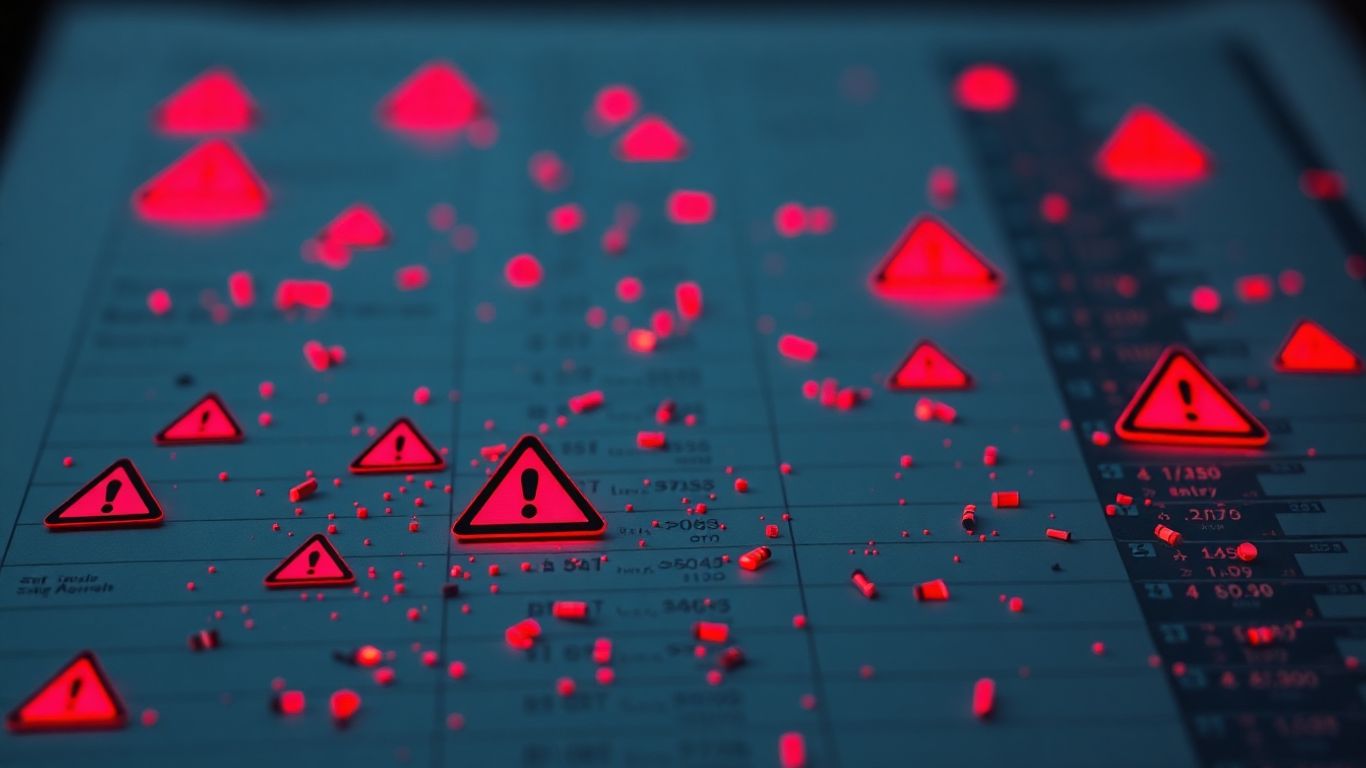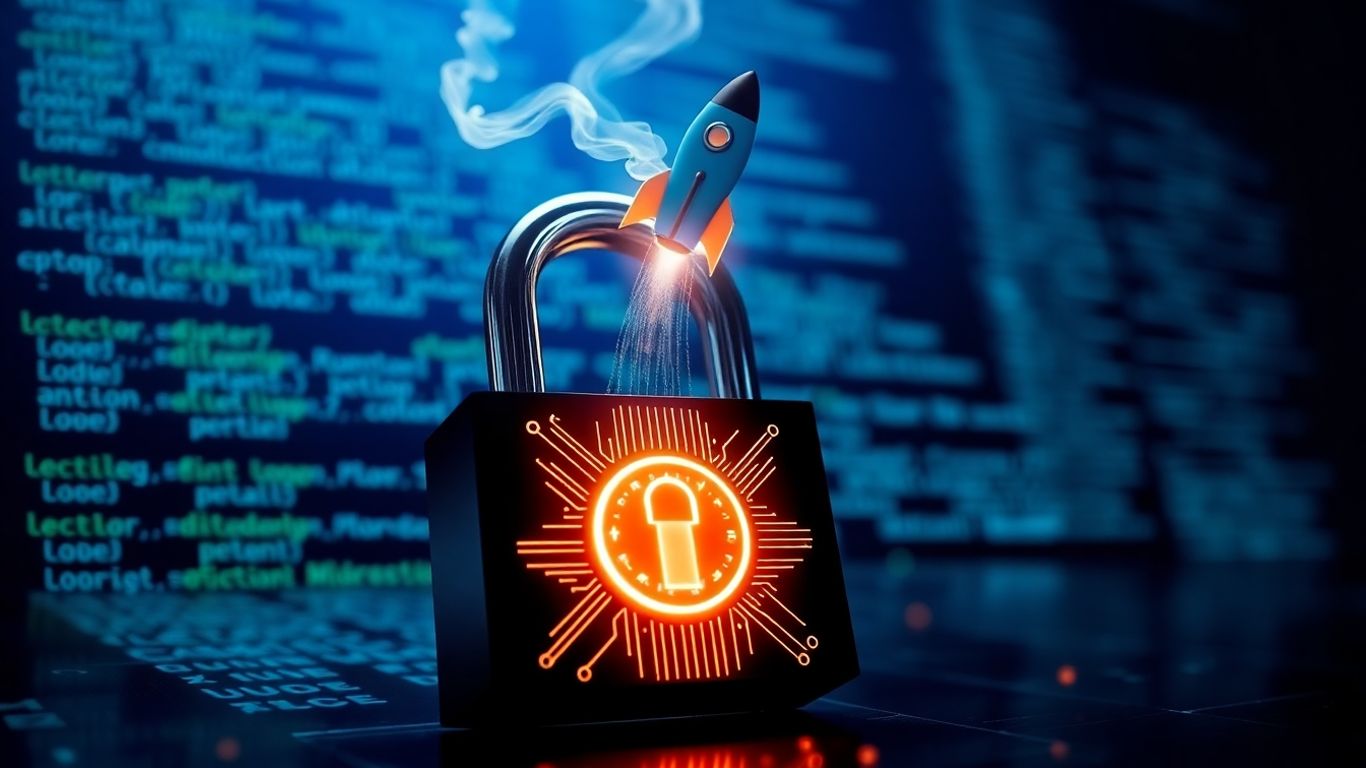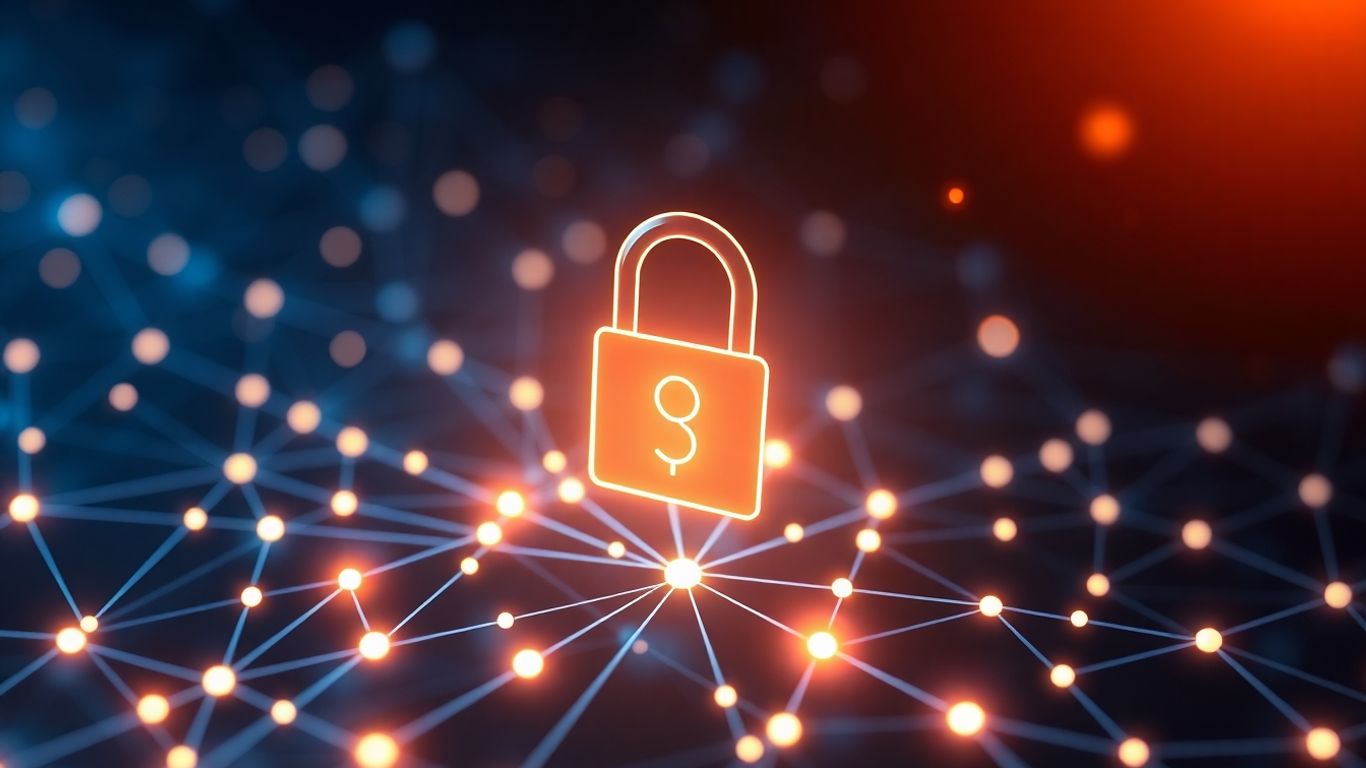[ newsletter ]
Stay ahead of Web3 threats—subscribe to our newsletter for the latest in blockchain security insights and updates.
Thank you! Your submission has been received!
Oops! Something went wrong. Please try again.
Explore the API for Wallet Risk: score and explain wallet risk with AI-powered insights, continuous monitoring, and real-time security.





Keeping digital assets safe and sound is a constant challenge, especially with how fast things change in the crypto world. You've likely heard about the need to check crypto wallets, and that's exactly where an api for wallet risk becomes super useful. It's a tool that helps figure out if a digital wallet is connected to anything risky or against the rules, like sanctions. This is really important for businesses and even law enforcement to stop bad stuff from happening with digital money. We'll take a look at how these tools work and why they're becoming a big deal.
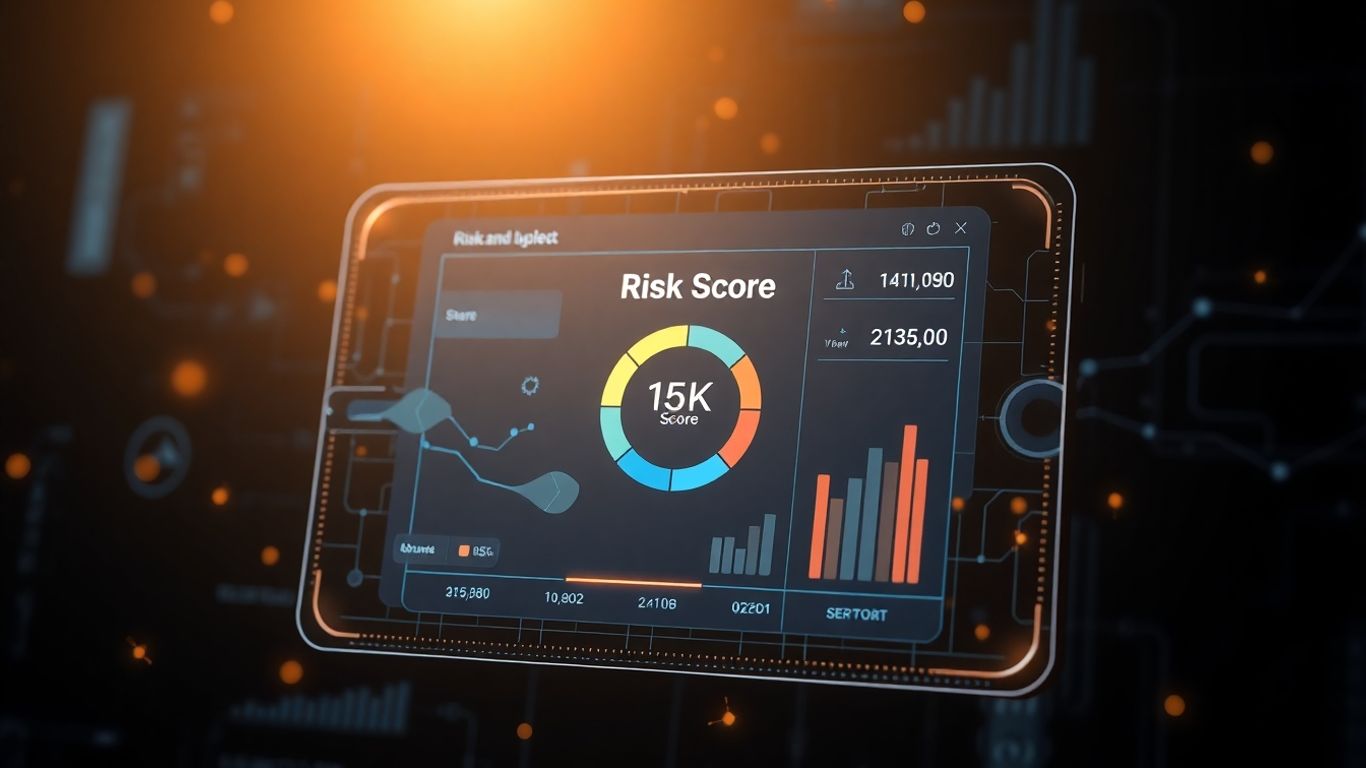
Dealing with cryptocurrency means you're going to interact with a lot of digital wallets. Whether it's for your business, your investments, or just managing your own funds, knowing what's behind those wallet addresses is pretty important. That's where wallet risk scores come into play. Think of it like a quick background check for a crypto wallet. These scores look at a wallet's history – what kind of transactions it's been involved in, if it's ever touched anything suspicious, or if it's linked to known bad actors. It's not just about one transaction; it's about the whole picture.
Wallet trust scores give you a quick way to gauge the safety of a wallet. They analyze a wallet's on-chain activity, looking at things like transaction patterns, connections to other wallets, and whether it has interacted with known risky entities. This helps you make faster decisions about whether to engage with a particular address. It's about getting that immediate risk assessment without having to manually sift through tons of data yourself. This is super helpful when you're dealing with a high volume of transactions or new counterparties.
Smart contracts are the engines of many decentralized applications, but they can also be a weak point if not built or managed carefully. Smart contract trust scores offer a look into the security of these contracts. They examine factors like the code's quality, how it's set up to operate, and if it has a history of issues or exploits. This score gives you a snapshot of how secure a contract is, right on the blockchain. It helps you understand the safety of the code itself before you interact with it, potentially saving you from future problems.
Here's a quick look at what goes into these scores:
The crypto world moves incredibly fast, and security threats are always evolving. Relying on checks done only once in a while just isn't enough anymore. What you really need is a system that's always watching, always learning. That's where AI-powered continuous monitoring comes in. Imagine a smart system that's constantly scanning transactions, looking for unusual patterns, and flagging anything that seems even a little bit off. It's like having a security guard who never sleeps and is an expert at spotting trouble. This kind of setup uses artificial intelligence to analyze everything in real-time, spotting new kinds of attacks as they happen, not after the damage is done. It’s a significant improvement over just checking things periodically.
This constant vigilance is key. Threats can emerge and exploit vulnerabilities in minutes, making traditional, infrequent security checks a thing of the past. An AI-driven approach provides the necessary speed and adaptability to keep pace with the dynamic threat landscape.
The world of crypto moves incredibly fast, and security threats are always popping up. Relying on old-school, one-time checks just doesn't cut it anymore. What you really need is something that's always watching, always learning. That's where AI-powered continuous monitoring comes in. Imagine having a smart system that's constantly scanning transactions, looking for weird patterns, and flagging anything that looks even a little bit off. It's like having a security guard who never sleeps and has a PhD in spotting trouble. This kind of setup uses artificial intelligence to analyze everything in real-time, spotting new kinds of attacks as they happen, not after the damage is done. It’s a pretty big step up from just checking things once in a while.
Traditional security audits, the kind you do once and then forget about, just aren't enough anymore. The crypto space is constantly changing, and so are the ways bad actors try to exploit it. We need a security approach that's automated, always on, and can look at everything happening right now. Veritas Protocol has put together a multi-agent AI system for this exact reason. It goes way beyond just scanning for weak spots; it's a full-on, autonomous security check system. By using a team of specialized AI agents, this platform can look at how contracts interact, check if the business logic is doing what it's supposed to, and see how different parts of a protocol rely on each other. This gives us the speed, accuracy, and scale needed to protect the next wave of tokenized assets. This system is built on advanced AI and can process huge amounts of data, making it way faster and more accurate than manual checks. It's a big deal for keeping things secure.
The operational failures and high-speed attacks we're seeing mean that old security methods are no longer sufficient. The RWA ecosystem needs a new security approach: one that is automated, continuous, and capable of analyzing entire systems in real time.
Think of these AI agents as a specialized team, each with its own job. They work together to find problems in smart contracts and protocols. One agent might focus on finding reentrancy bugs, while another checks the business logic. They can process a massive amount of code and transaction data, way more than a human could in the same amount of time. This allows for a much more thorough review of the entire system, not just isolated parts. The goal is to catch vulnerabilities before they can be exploited. This is a significant step up from traditional audits, which often only catch known issues and can miss new or complex attack vectors. The AI can also learn from past exploits, making it better at spotting similar patterns in new code. This continuous learning is key to staying ahead of evolving threats.
Finding a vulnerability is one thing, but fixing it quickly is another. The AI system doesn't just report problems; it can also suggest or even automatically apply fixes. This means that if a vulnerability is found, it can be patched almost instantly, often before anyone even knows it was there. This is what we call self-healing contracts. The AI can identify the issue, understand the context, and then deploy a corrected version of the code or a patch. This drastically reduces the window of opportunity for attackers. It’s a proactive approach to security that’s becoming increasingly necessary in the fast-paced crypto world. This capability is a game-changer for protocol security and stability, offering a level of protection that was previously unimaginable. You can find more information on how AI is changing risk management in finance and how these advanced security measures are being applied.
So, you're dealing with crypto wallets and need to figure out if they're safe or not. It can feel like a lot, especially with how fast things change in the digital asset world. That's where a Wallet Screening API comes into play. Think of it as a quick check-up for any wallet address you're interacting with. It helps you spot potential problems before they become actual issues.
At its core, a wallet screening API is a tool that checks a specific cryptocurrency address against various databases and risk indicators. It's not just about looking at one transaction; it's about understanding the wallet's history and connections. This process helps identify if an address is linked to anything risky, like known scams, darknet markets, or even sanctioned entities. The goal is to give you a clear picture of the risk associated with a wallet, allowing you to make informed decisions.
Here's a breakdown of what these APIs typically look at:
This kind of broad, real-time checking is what helps businesses build a solid compliance framework. It’s about having eyes on potential risks as they emerge. The API usually works by sending a request with a wallet address and getting back a risk score or a flag indicating whether the address is clean or potentially risky. This allows for instant risk assessment without you having to dig through tons of data yourself.
The crypto world moves fast, and so do the risks. Your screening tools need to keep pace, offering real-time checks and adapting to new threats as they emerge.
Adding new tools to your existing setup can sometimes be a headache, right? That's why a well-designed Wallet Screening API is built to be easy to integrate. It means you can plug it into your current transaction processing, customer onboarding, or risk management systems without a massive overhaul. For example, a crypto exchange could integrate this API into their user sign-up process. When a new user provides a wallet address, the API can instantly check it. If it flags as high-risk, the exchange can then ask for more information or even deny the account creation, all before any funds are moved. The speed and accuracy of these checks are paramount. A system that takes too long or incorrectly flags legitimate users can disrupt business operations and damage customer trust. The goal is to automate compliance checks efficiently, allowing teams to focus on higher-level risk management and strategic decisions rather than manual data verification. This kind of integration is what helps you stay compliant without needing a massive team dedicated solely to manual checks. You can get real-time address screening against global watchlists with this approach.
When you're looking at tools to screen crypto wallets, it's not just about ticking a box. These systems actually do a lot to keep things safer and smoother. Think of them as your digital bouncers, checking IDs and making sure no troublemakers get in. The API provides a way to get instant risk scores for wallet addresses. These scores are based on over 150 different risk factors, like who owns them or if they've been linked to scams. Speed and reliability are key here. How fast does it give you an answer? If it takes ages, it's not going to work for real-time checks. You want something that can give you data on millions of assets across many blockchains in milliseconds. Data coverage is also important – does it cover the blockchains you use? And how up-to-date is its information? You need to know it's checking against the latest global watchlists. Finally, having a wallet screening API isn't just about doing the checks; it's also about proving you're doing them. When auditors or regulators come knocking, you need to show them you have a solid process in place. A good API integration will log all your screening activities. This creates a clear, auditable trail of who was screened, when, and what the results were. It makes it much easier to demonstrate that you're meeting your regulatory obligations and actively managing risk.
When things go wrong in the crypto world, and they sometimes do, having a solid plan for what to do next is super important. It's not just about stopping attacks before they happen; it's also about what you do when a wallet compromise or a security breach actually occurs. This is where incident response and asset recovery come into play.
One of the trickiest problems we've seen is when a hacker manages to get into a wallet. They don't just take what they can immediately; they often set up bots. These bots are constantly watching the compromised wallet. The moment any new funds are sent to it, even just enough to cover transaction fees (gas), the bot snatches it up. This effectively traps any remaining assets, making them impossible to move using normal methods. It’s like a digital trap.
To get around this, a special solution has been developed. It bundles the necessary transactions – like sending funds to cover gas and then transferring the actual assets out – into a single, private package. This package is sent directly to network miners using technologies like Flashbots. Because it's private and bundled atomically, it bypasses the hacker's monitoring bots entirely. This means you have a real shot at getting your assets back, even after a breach.
Here's a simplified look at how that process works:
So, how does this bypass work? Normally, when you want to move crypto, your transaction goes into a public pool where anyone can see it. Hacker bots are programmed to watch this pool for any activity related to a compromised wallet. They're super fast and instantly grab any gas fees sent, effectively blocking your recovery attempt.
Flashbots, on the other hand, allows for private transactions. Think of it like sending a package directly to the post office manager's office instead of putting it in the public mailbox. Your bundled transaction goes straight to the miners without being exposed to the bots. This gives you a clean window to move your assets before the bots even know what's happening.
Beyond the technical recovery of assets from a compromised wallet, a broader incident response strategy is key. This involves:
Recovering stolen assets is a complex challenge, especially with the speed of automated attacks. The development of tools that can atomically bundle and privately submit transactions is a significant step forward, offering a lifeline when traditional methods fail. However, it's not a magic bullet; it works best when assets are still present in the compromised wallet and hasn't already been drained.
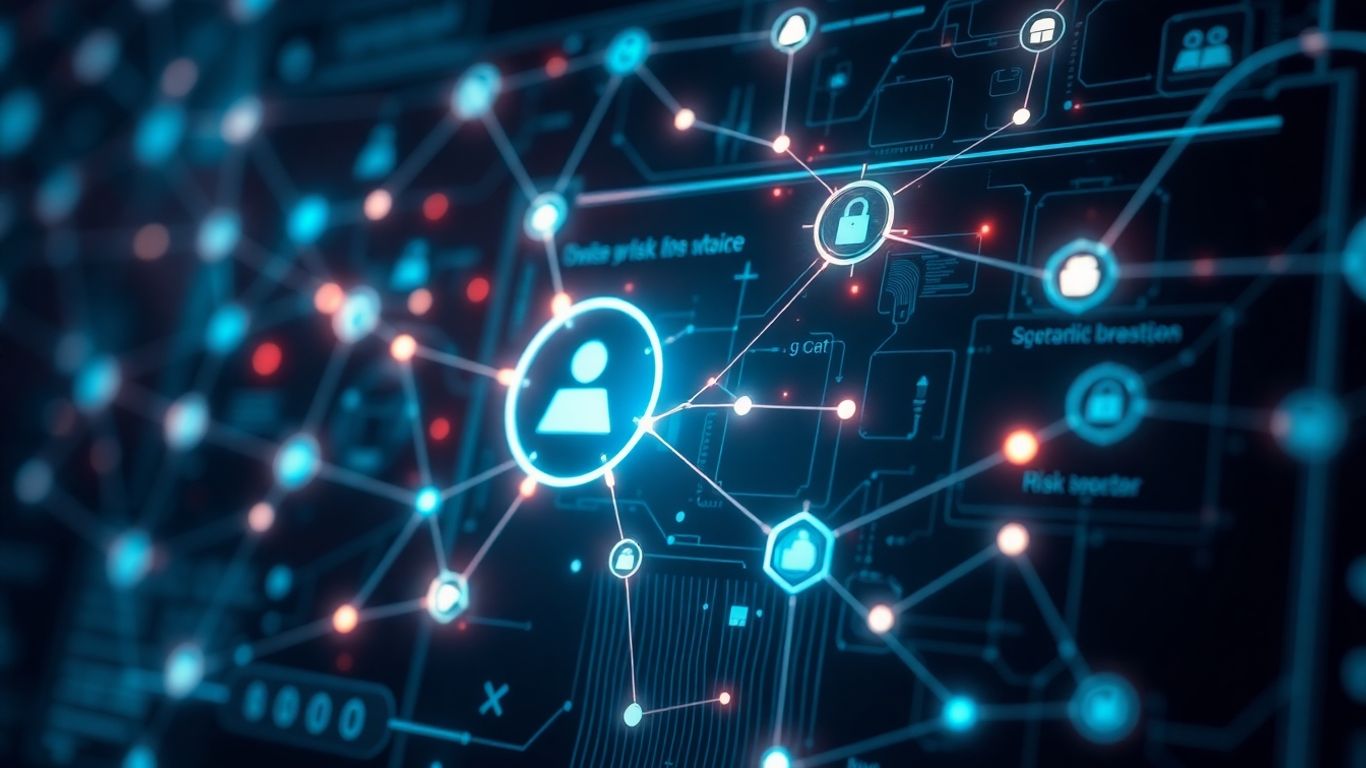
The world of tokenized assets, especially Real-World Assets (RWA), is growing fast. But with this growth comes a bigger target. Attackers are getting smarter, and the ways they try to steal funds are changing. It's not just about finding a bug in code anymore; it's about understanding the whole system and where it's weak.
We've seen a big shift in how attacks happen. Back in 2023, losses were spread across different issues, including smart contract problems and credit-related events. Then, in 2024, the focus moved more towards off-chain credit defaults. But the first half of 2025? That's a different story. Almost all the losses we saw were due to operational failures and on-chain issues. This means attackers are now directly targeting the technology and how things run on the blockchain itself. Think compromised private keys or messing with data feeds (oracles).
Here's a look at how the threat landscape has changed:
This trend shows attackers are moving away from traditional finance-style risks and focusing on the digital infrastructure. The attacks are faster and more complex now.
In the first half of 2025, several types of attacks caused the most damage. Access control failures were a big one, leading to massive losses. Compromised infrastructure, like stolen private keys or hacked systems, also caused huge problems. Logic errors in smart contracts were another major source of funds being drained.
Here are some of the top ways attackers got in during H1 2025:
The shift towards on-chain and operational failures means that simply auditing code once isn't enough. Continuous monitoring and rapid response are becoming absolutely necessary to protect assets in this fast-moving environment.
When we talk about tokenized real-world assets (RWA), the risks are pretty complex. The rapid growth means security measures often can't keep up. As more features and connections are added, the potential for attacks grows. And because these assets can be worth a lot, they attract very skilled attackers. The more complicated things get, the more ways there are for something to go wrong.
Some key things to watch out for include:
In the fast-moving world of digital assets, keeping up with regulations isn't just a good idea; it's a necessity. A solid compliance framework acts as your shield against fines, reputational damage, and operational headaches. It's about showing everyone, from your users to the regulators, that you're serious about security and legitimacy. This means more than just ticking boxes; it involves actively managing risks and staying ahead of potential problems.
Think of a wallet screening API as your digital gatekeeper. It's designed to check addresses against a whole host of risk factors, like whether they've been flagged for scams or are linked to sanctioned entities. This isn't just about avoiding trouble; it's about building trust. When you can demonstrate that you're actively screening wallets, you're showing a commitment to a cleaner ecosystem. The speed and accuracy of these checks are key. You want a system that can give you answers in milliseconds, not minutes, especially when dealing with millions of transactions across different blockchains. This kind of real-time screening is what helps you build that robust compliance framework we're talking about. It’s about having eyes on potential risks as they emerge.
Dealing with sanctions is a big part of crypto compliance, especially if your business operates globally. You absolutely need to be checking wallet addresses against official government and international sanctions lists. A dedicated sanctions screening API makes this process much more manageable. It automates the checks, ensuring you're not inadvertently transacting with individuals or groups that are blacklisted. This is non-negotiable for any serious player in the crypto space. Beyond just sanctions, these tools can also flag wallets linked to known criminal organizations, darknet marketplaces, or scam operations. It’s a broad, real-time check that significantly strengthens your compliance posture.
Getting a new tool integrated into your existing systems can sometimes feel like a chore. That's why a well-designed wallet screening API is built to be pretty straightforward to connect. It usually works by sending a wallet address and getting back a risk score or a simple flag. This means you can plug it into your current transaction processing, customer onboarding, or risk management software without a massive overhaul. For example, a crypto exchange could use this API during user sign-up. If a new user's wallet address flags as high-risk, the exchange can ask for more details or even block the account before any money moves. The goal is to automate these compliance checks efficiently, freeing up your team to focus on bigger-picture risk management instead of getting bogged down in manual checks. Having this kind of automated process also creates a clear, auditable trail of all your screening activities, which is super helpful when auditors come asking questions. It makes it much easier to show you're meeting your obligations and actively managing risk. This approach allows for real-time address screening against global watchlists.
As the world of tokenized assets continues to expand, it's clear that basic security checks just won't cut it anymore. We've seen how quickly things can go wrong, and relying on old methods is like bringing a knife to a gunfight. The future needs constant vigilance. Tools like AI-powered monitoring and dynamic trust scores for both wallets and smart contracts are becoming essential. They help us spot trouble early and react fast, even recovering assets when things go south. For everyone involved – from developers building these systems to the people investing in them – adopting these advanced security practices isn't just a good idea, it's a must-have to keep this exciting new financial frontier safe and sound.
A wallet risk score is like a safety rating for a digital money pouch, called a wallet. It checks the wallet's history, like where its money has come from and gone, to see if it's been involved in anything risky or against the rules. A higher score means it might be safer to avoid.
Smart contracts are like automatic agreements in the crypto world. A smart contract trust score is a rating that tells you how secure and reliable a specific contract is. It looks at the contract's code and its past actions to give you an idea of whether it's safe to use.
Continuous monitoring means a security system is always watching and checking for problems, 24/7. Instead of just checking once, it constantly looks for suspicious activity, like a security guard who never takes a break. This helps catch new threats as they happen.
Sometimes, yes. If your crypto gets stolen, there are special tools that can help get it back. These tools use advanced technology to bypass hackers and safely move your assets back to you, even if hackers are trying to steal them instantly.
Hackers use many tricks! Some common ones include tricking people into giving up their passwords (social engineering), finding flaws in the code of smart contracts, or taking over accounts with weak security. They are always finding new ways to steal money.
An API (Application Programming Interface) is like a messenger that lets different software talk to each other. For wallet risk checking, an API allows your existing systems to automatically ask a security service if a wallet is safe or risky, without you having to do it manually. It makes checking lots of wallets much faster and easier.
